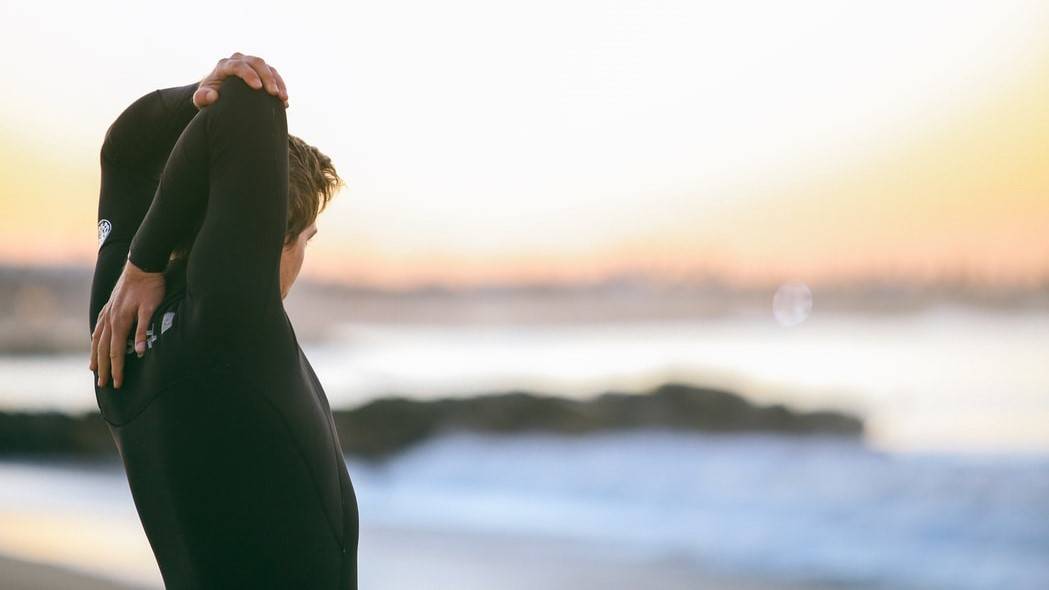Even if most people don't necessarily think about open water training at the current temperatures, it doesn't hurt to start thinking about spring now. But since it can still be quite cool there in the water, a wetsuit is essential for most people. And if you want to compete in a triathlon for the first time next year, you probably don't want to spend €600 on a wetsuit just yet. That's why we spoke to Xavier Merian from Aquaman, one of the first wetsuit manufacturers specifically for triathlon, and asked him what matters when buying a entry-level wetsuit.
“Above all, the Neo should offer the necessary protection against the cold. Entry-level neos are not as flexible as slightly more upscale neos, but they are definitely enough for the first people's triathlon. Of course, the better water position helps swimming beginners in particular. With some limitations, you also have this effect with the entry-level Neo.”
Robustness as an advantage and disadvantage
Since the entry-level models are usually a bit stiffer, they can also cope with a bit more stress. There is often a lot of tugging, especially when putting on and taking off, and where the high-end models can crack due to long fingernails, this is usually not a problem with the beginner neos. If damage does occur, firstly it doesn't hurt as much as with a professional model for up to €750 and secondly it can often be professionally repaired by a neoprene specialist.
target group
A beginner's neo is just right for you if your first triathlon (500-750 m swimming distance) is coming up next season or if you are still a "beginner swimmer", i.e. you have just started freestyle swimming. Even if you're just not sure whether you've got triathlon fever after your first event, your first choice of wetsuit shouldn't be the €600 suit.
flexibility
With the professional products, flexibility in the arm and shoulder area is of great importance. Entry-level neos have clear drawbacks, but these are usually not a problem for beginners, since fatigue at distances of up to 1500 m (Olympic distance) is usually not a problem.
lifespan
Xavier Merian says about the lifespan: “On average, a wetsuit lasts four years. Of course, that depends on how often you use it. Over time, the rubber (neoprene) becomes brittle. You can think of it like a bicycle tire. Then cracks begin to form. You can fix these cuts for a while, but eventually you can't fix them anymore. Of course, flexibility also decreases with age”
Compromises in features
In contrast to the professional models, the entry-level wetsuits do not have the following features :
- Nano SCS coating to further reduce frictional resistance on the wetsuit
- Panels at the ends of the arms and legs, which are said to improve "water grabbing and pushing off".
- Inner material optimized for a quick exit
- Improved buoyancy through special techniques (tiny gas bubbles enclosed in the material)
- Cut to swimmer anatomy
- Generally more flexible material (which, as mentioned above, is also more prone to cracking
Fit as the most important criterion
No matter how high-quality and expensive a wetsuit may be, if it does not fit, it will not bring you any advantage or much joy. When trying on suits, you should pay particular attention to the following areas: In the upper body area, especially on the shoulders, there should be little or no creases. You should also test the neck to see whether the neck opening is chafing or pinching off your air, and the tightness of your chest should under no circumstances impede your breathing. But overall, a wetsuit should be fairly snug, so don't let the unfamiliar feel unsettle you about whether it fits. It is best to get additional advice from an expert. And if you want to go for a slightly higher quality suit from the first model, keep in mind that there may be weight loss due to your training. After all, it would be very annoying if you were in top form for the competition but your wetsuit no longer fit you.
Tips for test swimming
boost
For beginners, buoyancy is often the biggest factor. This can be tested well by sitting in the water like in an armchair and feeling how strongly your legs are floating upwards.
make a preselection
So that you don't have to squeeze yourself into the twelfth wet neo during the test, you should limit in advance which models fit your budget and your requirements. You should also be patient, as over time putting on and taking off the suits becomes more and more exhausting due to the high humidity and temperature in the bathroom.
Don't forget your towel and bag
The purpose of the towel is probably relatively clear, as it is easier to get into the wetsuit dry. If you do have difficulties, it can help to put a plastic bag over your feet and use this to climb into the legs of the suit. You'll see, suddenly it's very easy.
Test extensively
The most important thing is that you really take your time with the test swim. Don't just swim 50-100m, but also 5-10 minutes. Meanwhile, you should pay particular attention to the neck area, whether the suit is already starting to chafe, or whether it is foreseeable that it will do so in competition. And don't go straight to the first model, because the difference in buoyancy was greatest there. This is often only the case because the difference from no Neo to the first model is greater than that to the second.
Basically, the suit that fits you best and with which you feel most comfortable in the water is actually the best!




















